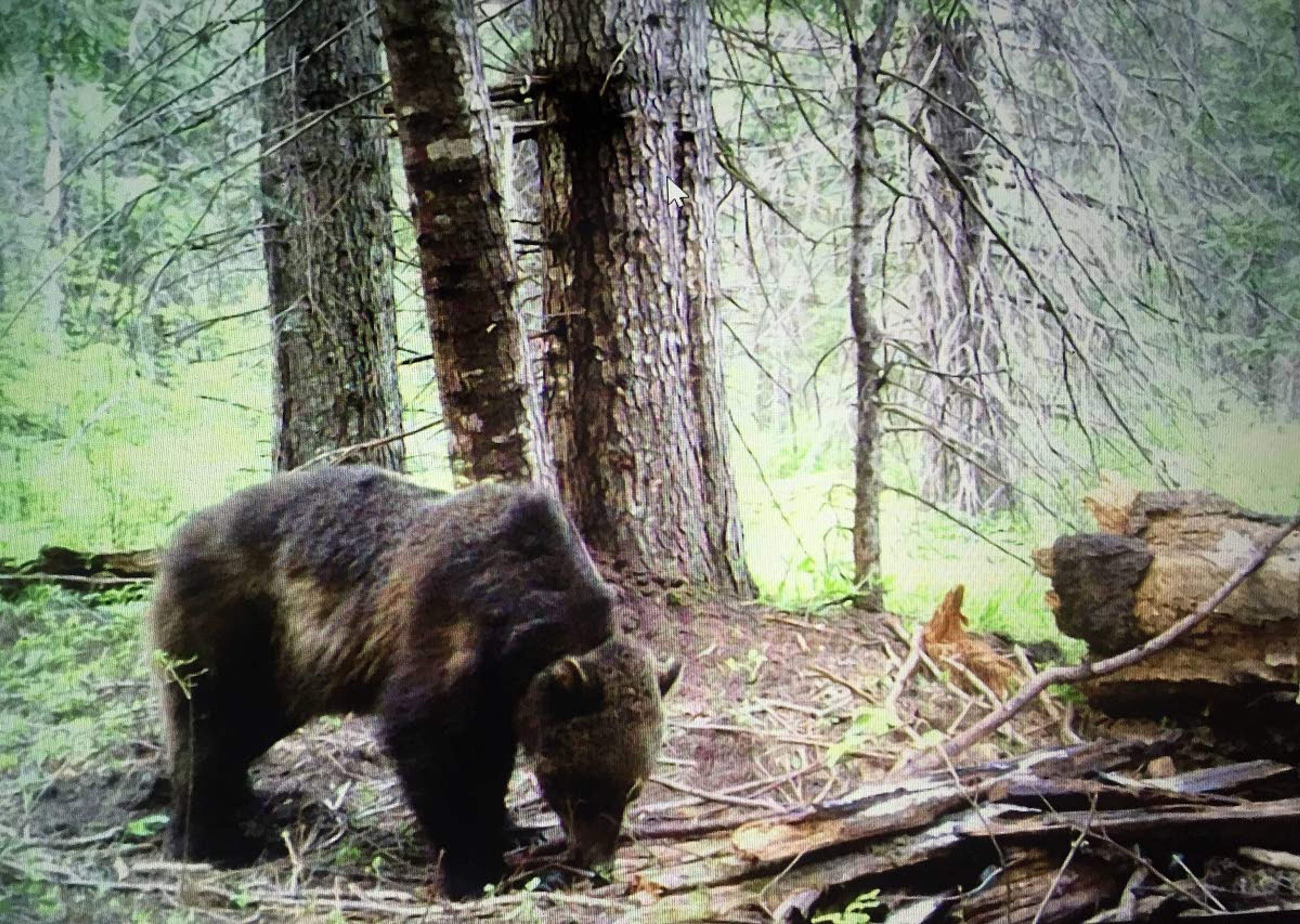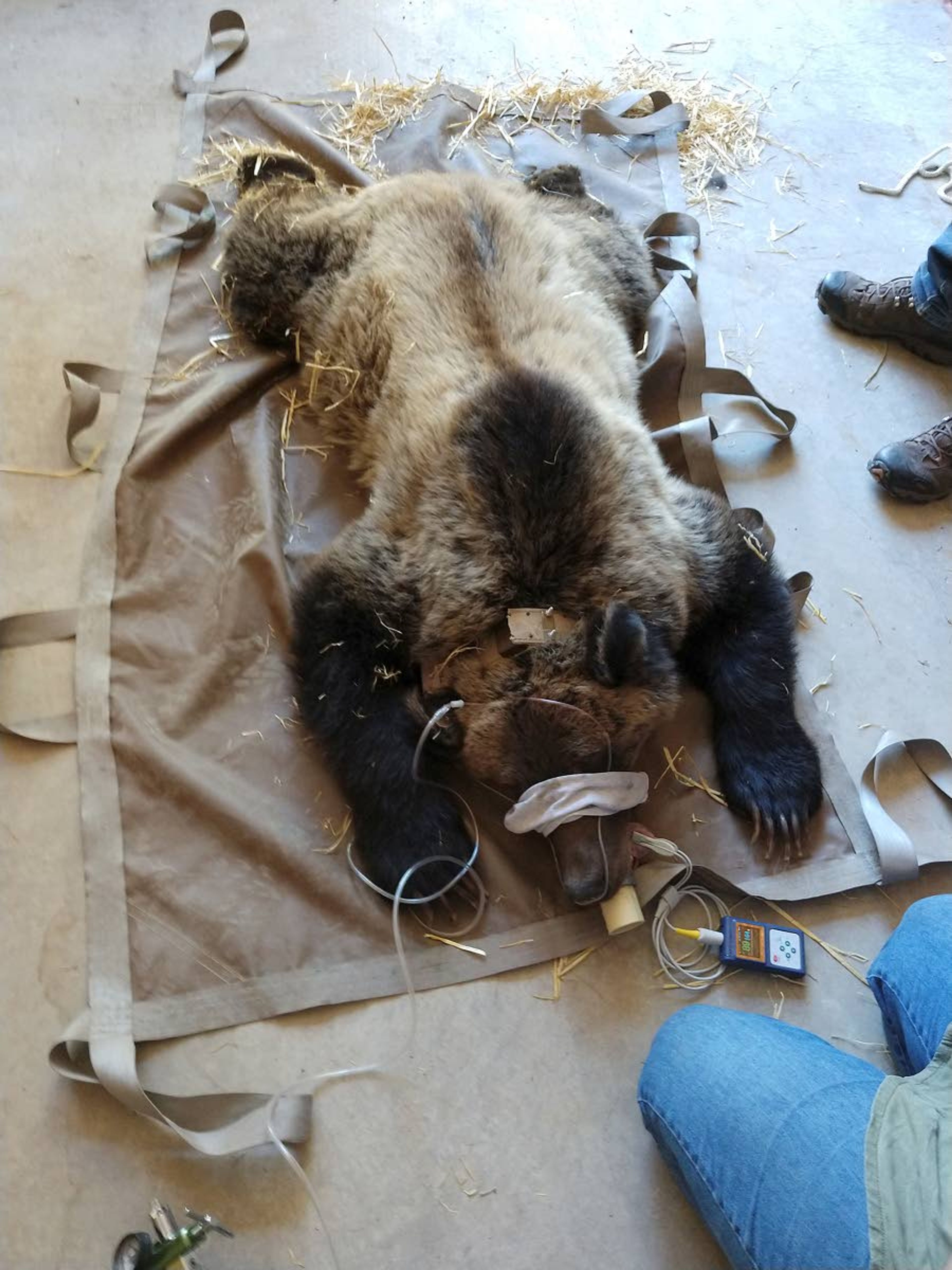Grizzly turns up at Kelly Creek
Lone male bear spotted in Nez Perce-Clearwater National Forests; game managers warn black bear hunters to choose their targets carefully
For the first time in more than a decade, a grizzly bear was spotted in a remote section of north central Idaho recently, and Idaho Fish and Game officials are cautioning black bear hunters to choose their targets with care.
Hunting guide Garrett Welling spotted the 3-year-old male bear in the lower Kelly Creek area of the Nez Perce-Clearwater National Forests in early June while stocking a black bear baiting site with food.
“I walked up on it at one of our baiting sites. It just kinda stood their off to the side while I was baiting and watched me,” he said from his remote camp during a brief interview over Facebook Messenger. “It’s very common to walk up on bear making my runs. So I didn’t think much about it. Just thought, that’s a strange looking black bear. Then upon reviewing the (trail camera) pictures, I noticed the (radio) collar and the obvious features of a grizzly.”
Welling cut a track of the bear several days later but hasn’t seen it since. He later reported the sighting to an Idaho Fish and Game Conservation officer. The agency is urging black bear hunters in units 10 and 12 of the upper Clearwater Basin to use caution when selecting targets. The black bear season there runs through the end of the month, but grizzly bears, which are protected as threatened under the Endangered Species Act, are off-limits to hunting.
“We want to make sure that hunters in the area be extra vigilant and careful while afield, both in identifying their targets and while traveling to their hunting spot, because we do have at least one known grizzly bear in there,” said Jon Rachael, state game manager for the department at Boise.
The U.S. Fish and Wildlife Service released the bear near Spar Lake in the Cabinet Mountains of Montana last July as part of an effort to augment the population there. The grizzly soon moved south and crossed the Clark Fork River into Idaho on Aug. 7. It was seen at a black bear baiting site in early September. Officials from the Fish and Wildlife Service and the Idaho Department of Fish and Game decided to trap the grizzly and move it back to Montana.
Wayne Kasworm, who monitors radio-collared grizzly bears for the Fish and Wildlife Service at Libby, Mont., said the capture and release went well but the bear almost immediately resumed its southward movements. It crossed the Clark Fork and spent time in Idaho before returning to the Cabinets to den for the winter.
The bear, estimated to weigh between 200 and 250 pounds, emerged from its den in late March and again moved south of the Clark Fork River. It spent some time about 40 miles southeast of Kellogg before moving into the Kelly Creek drainage.
Kasworm said wildlife officials plan to monitor the bear and continue to keep the public, especially black bear hunters, informed of its general location. Kelly Creek is within the greater Bitterroot Mountain ecosystem, which includes the Selway-Bitterroot Wilderness Area and roadless areas to the north. The area has been identified as a grizzly bear recovery zone and there was once a plan to move bears into the area.
That plan was shelved, but grizzly experts continue to consider the remote area prime grizzly habitat ripe for recolonization and expect that bears will eventually move there on their own.
Kasworm said the presence of the bear in the Bitterroots is exciting, but doesn’t mean the population will grow.
“A single male bear is probably not going to do a lot for the future of grizzly bears in the Bitterroots. It takes two of the proper sex to tango and create a population,” he said. “It does certainly indicate that bears can move and can get down there and, in the future, we may be seeing more of this. This bear just happens to have a radio collar on and we are unaware if there are maybe other individuals down there.”
The bear’s radio collar transmits its locations to Kasworm about a two or three of times per week. He said the bear was last confirmed to be in the lower end of the Kelly Creek, a tributary to the North Fork of the Clearwater River, and about 2 or 3 miles from the road along the popular fishing stream.
“That was several days ago. This guy is traveling and so I can’t say where he is at this particular moment,” Kasworm said.
He said grizzly bears typically have dish-shaped faces, ears that are smaller and more rounded than the ears of black bears, a discernible hump on the shoulders and long claws on their front feet.
A grizzly bear was last seen in Bitterroots in 2007 when a hunter mistook it for a black bear and shot it. That bear was also in the Kelly Creek drainage.
Gary Macfarlane, ecosystem defense director for Friends of the Clearwater at Moscow, said he is excited about the bear but also worries that bear baiting may lead it to become habituated to human food or be mistakenly shot.
“I think we have to end that program if we are going to see recovery and to avoid campground black bears as well,” Macfarlane said. “People need to be aware of food storage and safety issues.”
Tips for identifying grizzly bears and hunting safely in grizzly bear territory are available at http://bit.ly/2ZzVICu.
Barker may be contacted at ebarker@lmtribune.com or at (208) 848-2273. Follow him on Twitter @ezebarker.











